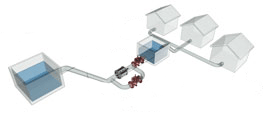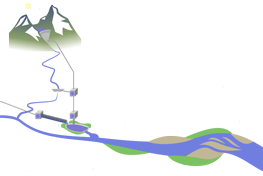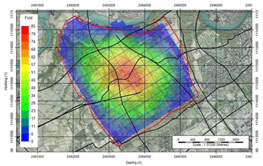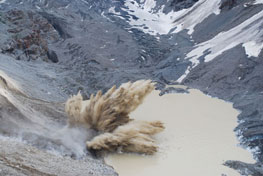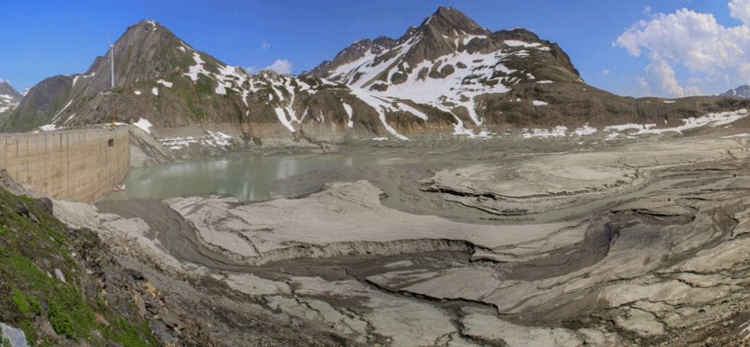Highlights from the first phase
In order to round off the first phase of the SCCER-SoE (which lasted from 2013 to 2016), we invite you to learn more about a collection of our research highlights. Like the various and numerous other projects within the SCCER-SoE, they are driven by the goal of compiling answers to the following overarching questions:
- Is it possible to generate 5 to 10 % of Switzerland’s electricity supply securely and at a competitive price through geothermal energy?
- How and at what price can hydroelectric power plant productivity be raised by 10 % while also increasing flexibility and maintaining the necessary infrastructure over the long term?
Energetic Drinking Water: Development of a Micro-Turbine to Improve the Extraction of Energy from Water Supply Systems
Drinking water is usually not associated with energy production. Nevertheless, currently more than 60 GWh are produced by drinking water networks, which covers the electricity consumption of approximately 12’000 households. With a newly designed micro-turbine, developed by the HES-SO and EPFL with the support of the SCCER-SoE and KTI Duo Turbo project, this amount could be doubled.
Big Learnings on a Smaller Scale: Successful Hydraulic Stimulation at the Grimsel Test Site
Within the “In-Situ Stimulation and Circulation (ISC)” experiment at Nagra’s Grimsel rock laboratory, a fundamental challenge related to geothermal exploration is addressed: generating an efficient heat exchanger without triggering potentially felt or damaging earthquakes. In February 2017, after a two-year long preparation phase, an interdisciplinary team with members of ETH Zurich and the University of Neuchâtel successfully conducted six stimulation tests to answer this challenge. They aimed to trigger shear dislocations along pre-existing faults in the granite to understand the relationships between pore pressure increases, its propagation in the reservoir, injectivity rates, strains, tilts and the seismic response. The analyses of the data collected will take place in the second phase of the SCCER-SoE.
Limiting Flushes: System Modeling to Mitigate Hydro-Peaking at New Storage Plants
System extensions and upgrades as well as an increased availability of new renewable energy sources will significantly affect the operation of hydropower plants. Hydro-peaking, resulting from intermittent discharge due to fluctuating power production, might affect the aquatic ecosystem of a river. To better cope with hydro-peaking in a changing environment, a team at Eawag and EPFL studied the example of a retention basin built for hydro-peaking remediation in Innertkirchen. By using models of relevant infrastructure elements and processes, the most effective mitigation measures can be selected and implemented. The tools developed within this case study will help to design and plan mitigation measures for hydro-peaking in other hydropower schemes and river systems.
An In-depth Look into the Geneva Basin: the Project GEothermie 2020 Running with Full Speed
The University of Geneva established a coherent 3D subsurface geological model of the Geneva basin. Over the past four years, the research group of “Reservoir Geology and Sedimentary Basin Analysis” was collecting all existing data (e.g. seismic, well and reservoir data) relevant to characterize the geothermal potential of the area. Their findings are an important contribution to GEothermie 2020, a project aiming to explore and use geothermal energy in the Geneva basin.
Menacing Waves: Enhancing the Risk Assessment for High-Altitude Storage Lakes by Estimating the Impact of Impulse Waves
Impulse waves, generated by avalanches, ice- or rockfalls, may seriously impair the reservoir of a hydropower plant. In some cases they even overtop or damage the dam and trigger hazardous flood waves. Examining their potential impact is therefore an inevitable part of a comprehensive hazard assessment for hydropower plants in alpine areas. The Laboratory of Hydraulics, Hydrology and Glaciology (VAW) at ETH Zurich advanced within the first phase of the SCCER-SoE the overall understanding of these processes particularly with regard to spatial impulse wave propagation. In the second phase, large scale field tests will be conducted to expand the current knowledge, which is based on modelling and laboratory experiments.
Green, Orange or Red: Limiting Induced Seismicity Through Adaptive, Data Driven Traffic Light Systems
Within the first phase of the SCCER-SoE, the Swiss Seismological Service at ETH Zurich with the support of Geo-Energie Suisse developed an innovative traffic light system aiming to limit potential negative effects of induced seismicity. It is based on quantitatively assessed thresholds, and updated on the fly, as soon as new data becomes available. It has been validated on a multitude of induced seismicity datasets and successfully deployed for the first time at the geothermal test site in Grimsel. In the future, it will be applied, tested and refined at various national and international sites.
Challenges in Evolving Reservoirs: Field Measurements and Numerical Simulation of Sediment Transport in Reservoirs in Glacier Areas
Climate change offers new perspectives for reservoirs close to glacier areas. They will benefit from increased water supply during the next decades. However, these reservoirs will likewise be affected by increased sediment input and consequently have to cope with reservoir sedimentation. The Laboratory of Hydraulics, Hydrology and Glaciology (VAW) at ETH Zurich studied suspended sediment transport processes in three reservoirs in the Swiss Alps. In the second phase of the SCCER-SoE, the software BASEMENT, originally developed to simulate hydro- and morphodynamics in rivers, will be applied to model sedimentation processes in periglacial reservoirs aiming to identify potential counter-measures.

